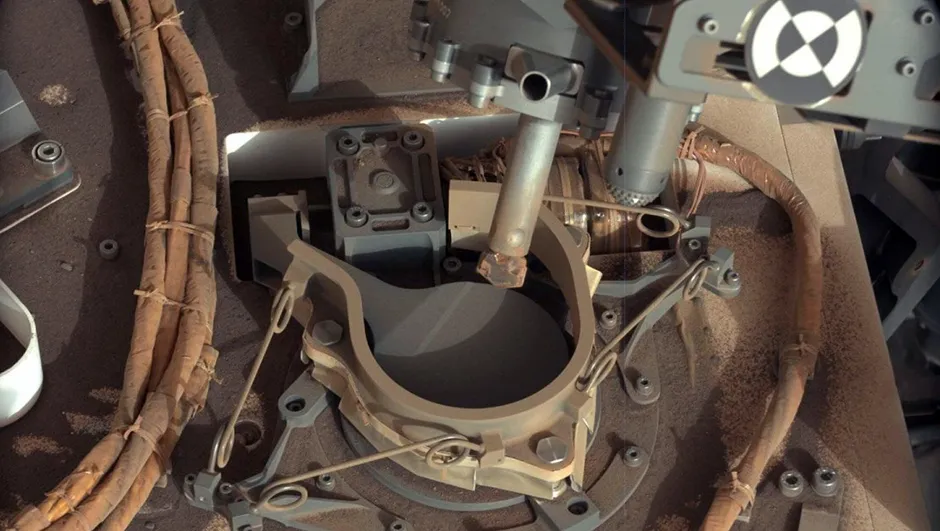Evidence has been discovered on Mars that suggests the planet could have supported life in its ancient past, NASA has announced.
One of the major discoveries is of ‘tough’ organic molecules in sedimentary rocks that are three billion years old.
Organic molecules contain carbon and hydrogen as well as potentially oxygen, nitrogen and other elements
- Roving robots on Mars: interview with a NASA Opportunity scientist
- Unexpected mineral discovered on Mars
- Ancient lakes discovered on Mars
While the presence of these molecules could point to life, organic molecules can also be created by non biological processes. Could they have been delivered to the Red Planet via panspermia?
Studies of the Martian atmosphere have also revealed the presence of gases that could point to life currently existing on the planet.
The discoveries were made by the Curiosity rover mission.
Coupled with previous discoveries that Mars’s ancient climate allowed liquid water to pool on its surface - an essential ingredient for life as we know it - this new discovery is building a hypothetical picture of a planet that was once habitable.
“The Martian surface is exposed to radiation from space. Both radiation and harsh chemicals break down organic matter,” says Jen Eigenbrode of NASA’s Goddard Space Flight Center, lead author of one of the two new Science papers.
“Finding ancient organic molecules in the top five centimetres of rock that was deposited when Mars may have been habitable, bodes well for us to learn the story of organic molecules on Mars with future missions that will drill deeper.”

Curiosity’s second major discovery announced by NASA is the detection of seasonal variations in methane in the Martian atmosphere.
These variations occurred over three Mars years, which is almost six Earth years.
Chemical reactions generated between rocks and water may be responsible, but NASA scientists haven’t ruled out the possibility that these variations are caused by biological processes.
"This is the first time we've seen something repeatable in the methane story, so it offers us a handle in understanding it," says Chris Webster of NASA’s Jet Propulsion Laboratory, lead author of the second paper.
"This is all possible because of Curiosity's longevity. The long duration has allowed us to see the patterns in this seasonal 'breathing."
The Curiosity rover launched from Earth on 26 November 2011 and landed on Mars on 6 August 2012.
Since then, it has been traversing the Martian landscape, drilling into the ground and analysing rock samples for evidence of life.
In order to identify this newly-discovered organic material, it drilled into sedimentary rocks at four sites in Gale Crater, which is thought to be a dried-out lake.
The fact that it was able to detect variations in methane in the Martian atmosphere bodes well for the Mars 2020 rover mission, which will search for more organics on the surface and just below.
“Are there signs of life on Mars?” says Michael Meyer, lead scientist for NASA's Mars Exploration Program.
“We don’t know, but these results tell us we are on the right track.”
Read more:
